Tutorial Session 2
6. Interferometry for Precision Engineers – Part II: Workshop
Erin McDonnell
Erin McDonnell is a Product Manager at Zygo Corporation, leading the laser interferometer product line, located in Middlefield, CT. She brings extensive experience in surface metrology and product lifecycle management. Erin plays a key role in translating customer needs into practical metrology solutions and has been instrumental in driving product strategy and technical training initiatives across global teams for the laser interferometer line. She has been with Zygo for 14 years.
Contact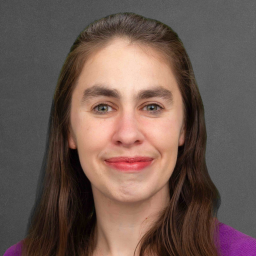
Michael Schmidt
Michael Schmidt is a Senior Product Development Manager at Zygo Corporation, also based in Middlefield, CT. With a background in product integration and metrology systems, he focuses on developing high-performance solutions for precision measurement applications. Michael is currently leading initiatives involving coherence scanning interferometry, vibration-robust acquisition, and industrial metrology integration. He has been with Zygo for 25 years.
Contact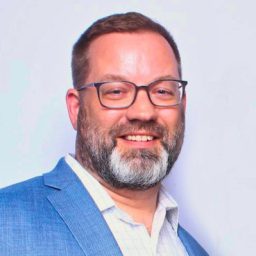
Tutorial Overview
As industries increasingly demand tighter tolerances, higher throughput, and more robust quality control, the role of optical metrology—particularly interferometry—has become central to innovation in manufacturing, optics, and semiconductor sectors. This workshop equips participants with the practical skills needed to implement interferometric techniques in real-world production environments, where precision and repeatability are critical. Attendees will leave with insights that can directly influence product quality, process control, and system integration strategies in their organizations.
This interactive workshop provides hands-on experience with state-of-the-art interferometric tools and techniques used in surface metrology. The session emphasizes practical skills and real-time measurement strategies that complement the theoretical foundations presented earlier in the day. Highlights include:
- Introductory Lecture: A brief overview of the software interface and basic controls, which will also serve as course notes.
- Live Demonstrations: Using at least one optical profiler and a Fizeau interferometer.
- Guided Exercises: Participants will perform hands-on measurements and explore troubleshooting techniques.
Learning objectives
- Operate and interpret data from an optical profiler and a Fizeau interferometer.
- Perform live measurements on a variety of engineered surfaces.
- Describe and mitigate the influence of environmental and set-up conditions on measurement accuracy and repeatability.
- Apply best practices for optimizing measurement repeatability and robustness in real-world applications.
Intended audience
This is a beginning to intermediate level course, for anyone interested in learning how to take measurements with state-of-the-art instruments. The intended audience is engineers, scientists and measurement specialists.
The morning course “Interferometry for Precision Engineers – Part I: Principles” is a recommended prerequisite.
7. Optical Alignment
Dr. Vivek Badami
Dr. Vivek Badami has been involved in the development of ultra-high precision metrology instruments and systems for over 30 years. He currently leads the Optical Systems Group at Zygo and is also a Technology Fellow. He is actively involved in mentoring young engineers in the art and science of precision engineering and has taught numerous tutorials on a variety of topics through the ASPE tutorial program. Vivek is active in the precision engineering and metrology communities and is a past president of the American Society for Precision Engineering (ASPE). He has served the Society in various capacities, including as Associate Editor for the international journal of the Society, Precision Engineering. Vivek has authored several technical papers, a book chapter and holds several patents. Vivek obtained his doctorate from the Center for Precision Metrology at the University of North Carolina at Charlotte, where he has served as an adjunct faculty in the Department of Mechanical Engineering and Engineering Science. Vivek is a Fellow of the ASPE.
Contact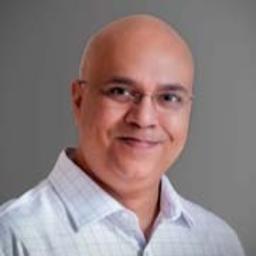
Dr. Eric Buice
Dr. Eric Buice is a mechanical engineer at the Lawrence Berkeley National Laboratory (LBNL) where he leads the engineering division mechanical design and metrology groups. In addition, he is the project engineer for the Gamma-Ray Energy Tracking Array project (a Department of Energy capital asset project). Eric has authored several technical papers, book chapters, and patents in the areas of precision engineering design, and alignment and assembly. He is an active member of the precision engineering community and had the honor of serving as President of the American Society for Precision Engineering (ASPE) in 2018. Eric received his Ph.D. in Mechanical Engineering from the University of North Carolina at Charlotte while being a member of the Center for Precision Metrology. Prior to joining LBNL, Eric was employed at Carl Zeiss SMT GmbH, Lawrence Livermore National Laboratory, and Delft University of Technology.
Contact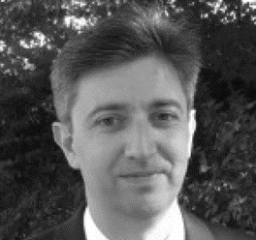
Tutorial Overview
Tight tolerance alignments are often a requirement in the building and testing of precision engineered instruments and machine tools. The alignment requirements often exceed the capabilities of more traditional mechanical alignment techniques. This tutorial focuses on the use of optical instruments and techniques that are capable of much higher tolerances typical of optical fabrication to perform alignment of mechanical and opto-mechanical systems.
The main focus of this introductory course will be on the use of autocollimators, Fizeau interferometers of various kinds, the autostigmatic (point source) microscope, and associated accessories. The course will cover the basic principles of optics relevant to these instruments and their operating principles. Alignment aids and accessories which enable the use of optical instruments with mechanical datums will be discussed. The course will culminate with alignment examples that demonstrate the application of these techniques.
Learning objectives
You will learn about the following:
- Basic principles of operation of the autocollimator, Fizeau interferometer and point source microscope
- Numerous alignment aids and accessories that enable the use of optical instruments with mechanical datums including reflective targets, constant deviation prisms and other alignment aids.
- Application of these instruments to multiple prototypical alignments that will form building blocks that will enable you to perform your own alignments.
- Application of these techniques to complete alignment examples that are typical of precision engineering applications.
8. High Tech Systems Engineering, Theory and practical exercise
Jelm Franse
Jelm Franse recently retired from ASML where he led various development departments since 2010. He has been working for 40 + years in various companies on the development of High Tech Systems and consumer products. He is now active as Managing Partner and Co-Founder of FFSS B.V. focusing on helping professionals to develop their technical leadership by providing courses and mentoring. Jelm obtained an MSc from Technical University Delft and a PhD from Technical University Eindhoven.
Contact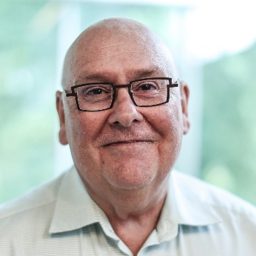
Ton Peijnenburg
Ton Peijnenburg is with VDL Enabling Technologies Group where he is Manager Systems Engineering. He studied Electrical Engineering at Eindhoven University of Technology (TU/e, the Netherlands) where he obtained his MSc in 1992. He then started working as a development engineer at Philips’ Center for Industrial Technology (Eindhoven). From 2002 until 2007, he was a mechatronics systems manager at Philips Electronics North America. From 2008 until 2010, he was R&D manager for the Phenom Scanning Electron Microscopes at FEI company (Eindhoven). In 2010 he became manager Advanced Developments at VDL Enabling Technologies (Eindhoven), where he currently is manager Systems Engineering. In 2015, Ton was appointed research fellow at TU/e High Tech Systems Center.
Contact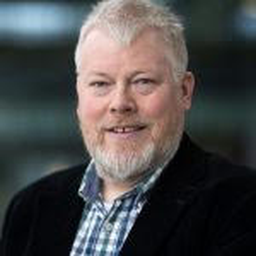
Jos de Klerk
Jos de Klerk is a senior systems engineer at Settles Savenije, Eindhoven, The Netherlands, where he is involved in multiple high tech innovative complex product developments, is leading the systems engineering competence development and is improving technical roadmaps. Jos has 30 years of experience in the semiconductor industry and has worked at ASML and VDL ETG of which many years as a systems engineer. Jos holds a MSc degree in Physics from Delft University of Technology.
Contact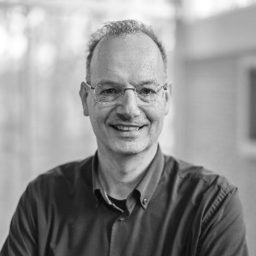
Tutorial Overview
Systems engineering is an interdisciplinary field of engineering and engineering management that focuses on how to design, integrate, and manage complex systems over their life cycles. This holds for any system but in high-tech equipment volumes are low, complexity is high and usually time-to-market is critical. This leads to a specific way of “doing SE” and this course will thus focus on precision engineered high-tech equipment.
Learning objectives
One half of the course covers theory of important SE principles, namely ‘requirements’ and ‘system decompositions. With ‘requirements’ is meant: the flow from stakeholders needs to requirements, called ‘elicitation’, the art of requirements writing, the different types of requirements, etc.. Methods to decompose the system into functions, modules and their relations will be explained in such a way that it becomes clear that parts of the system can be developed in parallel (concurrent engineering).
Emphasize will be given on practice. Therefore, the other half of the course consists of exercises where the theory will be practised. The exercises will also demonstrate the importance of human interactions such as effective communication with stakeholders, team leadership and presenting to management.
Intended audience
This course is meant for ‘mid-senior’ systems engineers who have 5 to 10 years of work experience of which 1 to 3 years as a systems engineer/architect. Senior systems engineers who feel the need to go ‘back-to-basic’ are welcome as well and for students or starting engineers this course can provide a first orientation on designing complex systems in high tech business environments.
9. Basic Control Theory
David L. Trumper joined the MIT Department of Mechanical Engineering in August 1993, and holds the rank of Professor. He received the B.S., M.S., and Ph.D. degrees from MIT in Electrical Engineering and Computer Science, in 1980, 1984, and 1990, respectively. Professor Trumper’s research centers on the design of precision mechatronic systems, in topics including precision motion control, high-performance manufacturing equipment, novel measurement instruments, biomedical and bioinstrumentation devices, and high-precision magnetic suspensions and bearings. He is a member of the IEEE, ASME, and ASPE (past President).
Contact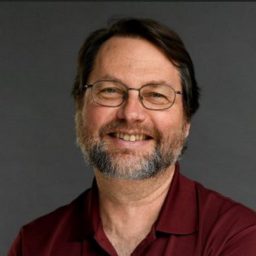
Tutorial Overview
This tutorial presents key principles for the design and implementation of control systems for precision machines, as well as the interaction of these controllers with the chosen system hardware. The topics covered include: PID control laws, and their implementation in analog and digital form, nonlinear effects such as integrator windup, anti-windup, PID tuning, and the limitations of PID as a controller form. We also discuss the more general concepts of loop shaping design via lead and lag compensation, and the implementation of these controllers in analog and digital form. The value of using a dynamic analyzer to measure loop shaping performance is presented. Additional topics include the effects of machine stiffness and damping on control performance, the effects and modeling of quantization and noise. Case studies provide context. Assumed prerequisites include prior experience with control systems in some form, as well as earlier exposure to dynamic systems theory, including the Laplace transform, poles/zeros, and Bode plots.
10. Geometric specification & verification – Symbiosis in tolerancing and metrology – Part II
Dr. Edward Morse
Dr. Edward Morse is the Norvin Kennedy Dickerson Jr. Distinguished Professor in mechanical engineering at the University of North Carolina at Charlotte, and is the director of UNC Charlotte’s Center for Precision Metrology. His current research interests include large scale metrology, assembly modeling and analysis, machine tool metrology, uncertainty estimation and analysis, tolerance standards and modeling, and various aspects of computational metrology (including the application of machine learning). Ed is the chair of the ASME B89 committee on Dimensional Metrology and is a long-time member of ASME Y14.5.1 on the Mathematical Definition of Dimensioning and Tolerancing Principles. He also represents the US on ISO Technical Committee 213 in working groups dedicated to metrology, tolerancing, and uncertainty.
Contact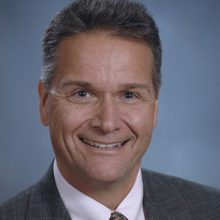
Dr. Jaime Berez
Dr. Jaime Berez is an Assistant Professor in the Department of Mechanical Engineering and Engineering Science at UNC Charlotte where he works with the Center for Precision Metrology, an industry-university collaborative research center. He conducts research at the intersection of advanced manufacturing and metrology, often with a focus on metrology as applied to metal additive manufacturing (AM) machines and workpieces. His research often leverages geometric dimensioning and tolerancing (GD&T) and he is passionate about integrating engineering product definition concepts (GD&T, metrology, standards) into engineering curricula using strong teaching pedagogy. Jaime is certified by ASME as a Senior Level GD&T Professional (GDTP) in accordance with the qualifications of ASMEY14.5.2–2017.
Contact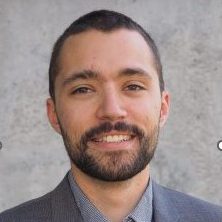
Tutorial Overview
This tutorial will provide attendees with a comprehensive introduction to the language of geometric product specification (GD&T), combined with the practical considerations of determining conformity or nonconformity to these specifications (metrology). While geometric specifications are well defined on ideal geometry, the interaction of non-ideal geometry with various measuring systems provides challenges in determining conformity to the specifications. This tutorial uses the discussion of gaging and measuring techniques to not only reinforce the understanding of the geometric specification, but to provide the attendee with guidance in choosing and utilizing measuring systems. The two-part tutorial will build from basic concepts of specification and gaging to more advanced topics such as functional tolerancing, coordinate metrology algorithms, sources of measurement error in metrology systems, and common areas of misalignment or ‘methods divergence’ between the intent of a specification and the method of verification. While there will be some interplay between the two parts of this tutorial, Part 1 will largely focus on specification (GD&T) while Part 2 will largely focus on verification (metrology).
Note: Part 1 of this tutorial is strongly recommended as a prerequisite for Part 2, which will use vocabulary, symbology, and concepts from Part 1 extensively. Part 1 may be taken alone if desired.

